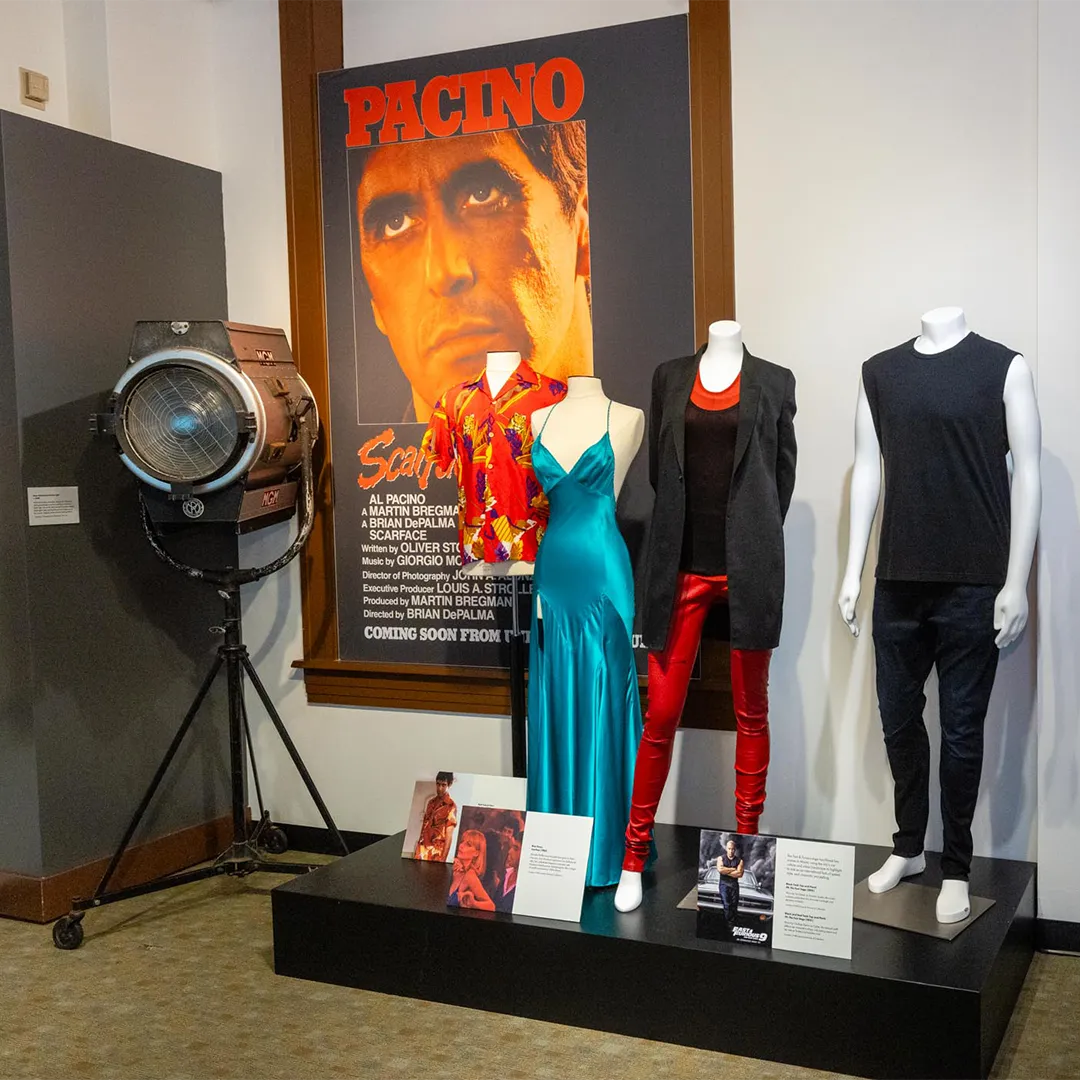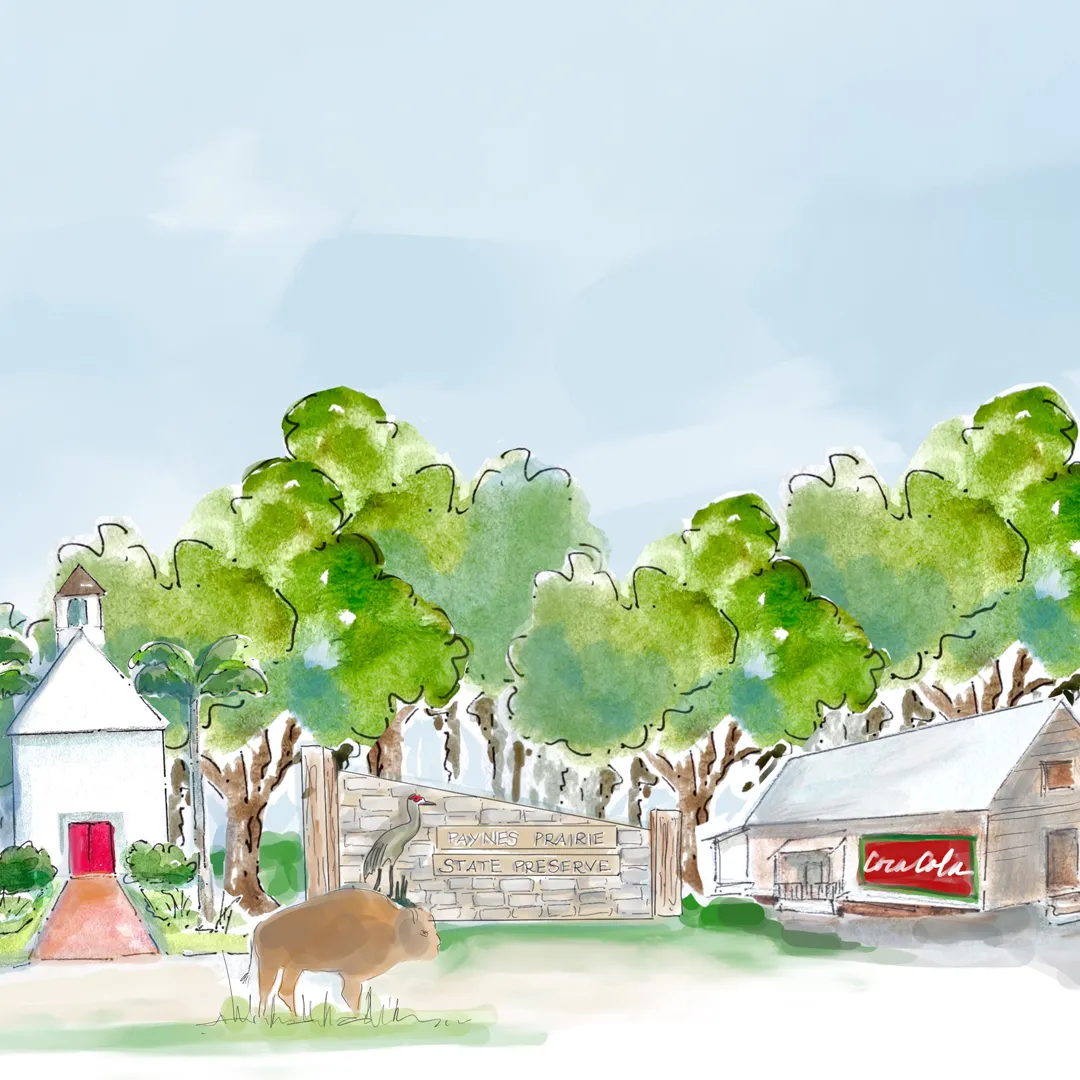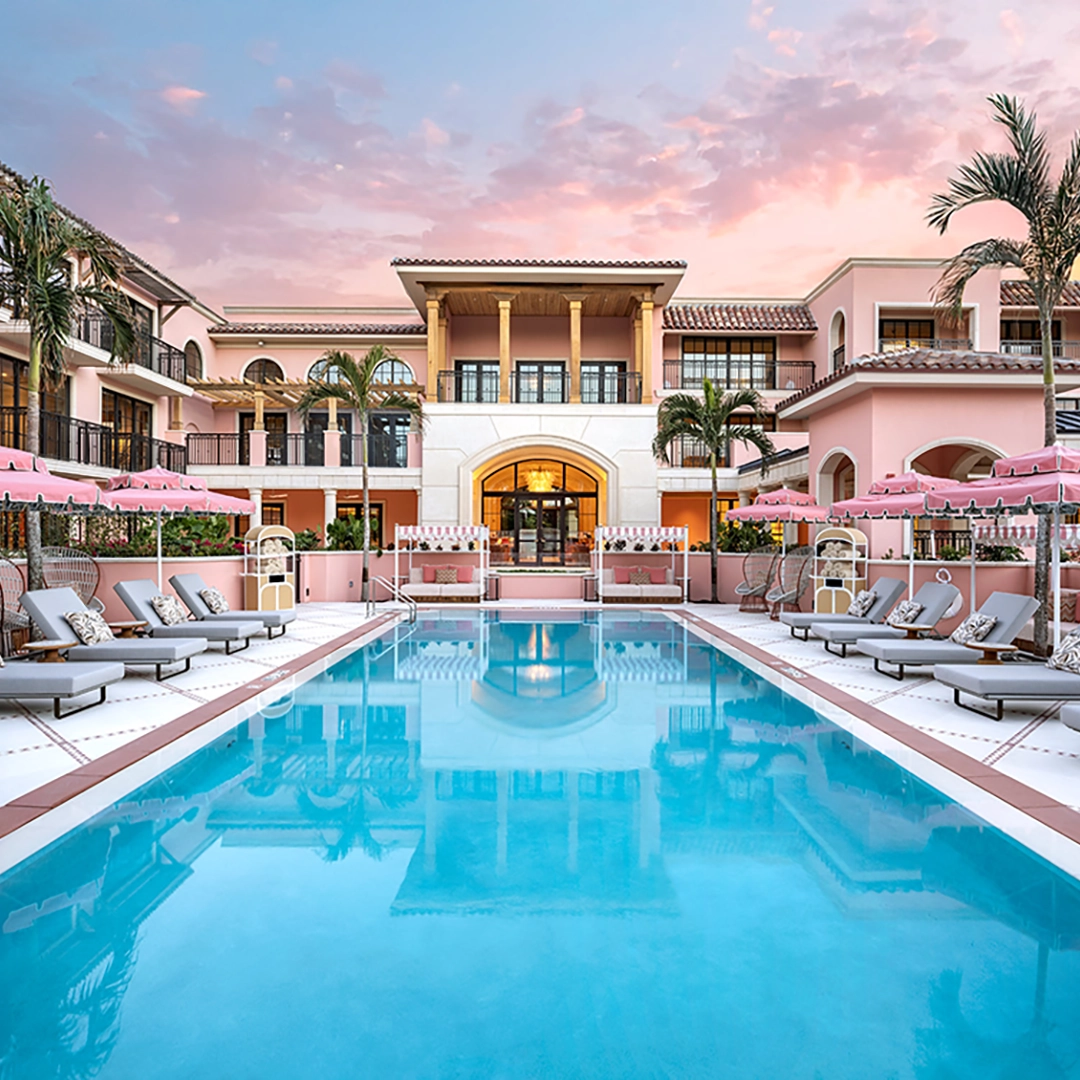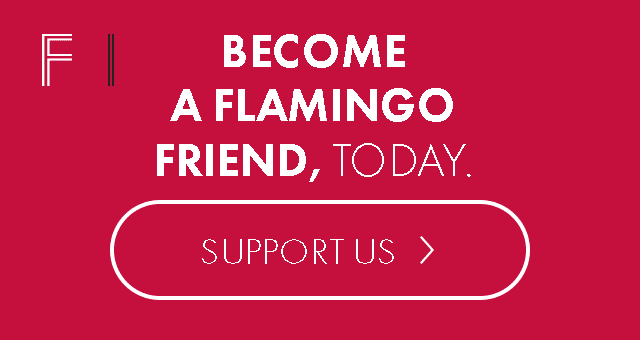Cuba Confidential
Exploring the lesser-known parts of our simpático next-door neighbor before she changes
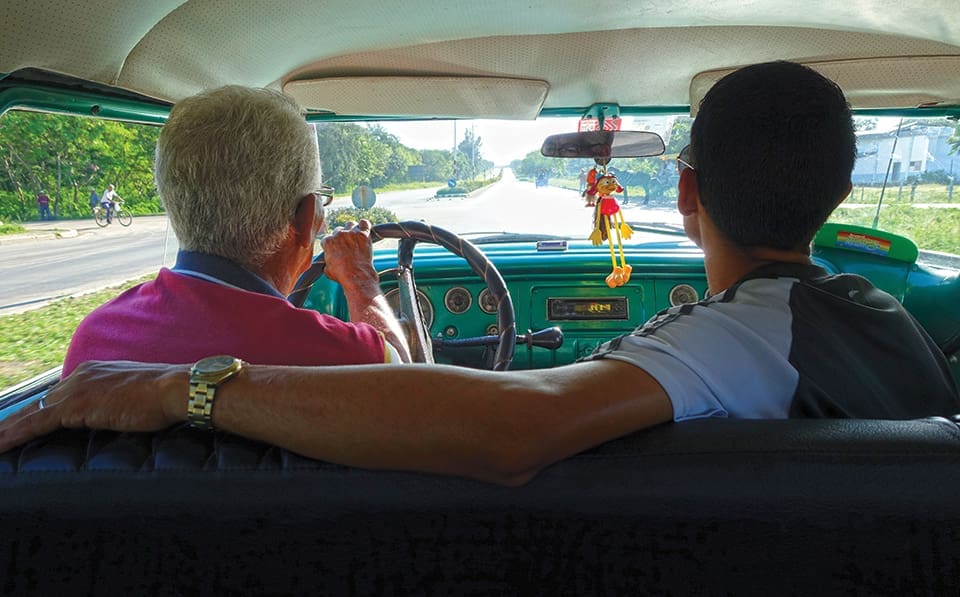
The nerves kick in as my 45-minute flight from Jamaica descends toward the airport in Holguin, Cuba—and not because of the bumps in the clouds or the fact that I’m nearly eight months pregnant. I’m about to finally meet my boyfriend Javier’s mom and brother, whom I’ve greeted just a few times via shoddy video chat.
As a travel writer, I’ve built a career on finding adventures in new-to-me places. I’m approaching my 41st birthday full of worldly experiences and at ease almost everywhere I go. But this was no ordinary tourist visit to Cuba.
From the arrivals area, I spot a petite brunette named Susana and her son, Janier, waving to me from a gated area outside the doors. With a bright pink shirt and shiny black curls, she looks far younger than her 60 years.
The jitters melt away as soon as I step outside, far from my hometown of Tampa, and we exchange hugs. I feel my baby kicking inside me and tell Susana he’s happy to be in Cuba, too. She only speaks Spanish. I’m grateful for my high school lessons, but am now wishing I’d paid more attention.
“You have to eat mucho for my nieto,” she says, referring to her future grandson and giving my belly a little pat.
I’d heard about the warmth of Cuban culture, but I’m surprised by how instantly welcomed I feel. Janier, 34, a thinner version of my boyfriend, with the same thick eyebrows, mischievous eyes and jet-black hair, hails a Russian Lada taxi and we drive toward town. Horse-drawn carriages share the streets with antique Chevrolets and Dodges.
Like what you read? Click here to subscribe.
Javier was beyond disappointed that he had to stay behind in Jamaica, where he lives. He’s mired in the bureaucratic system, waiting for his resident permit there to come through before he can finally travel back to Cuba. He’s made a video for me to share with his family, and on the ride to his childhood home, I pass my iPad to his mother and brother. They play his short, sweet message promising to visit soon, and Susana tears up.
“It’s been two years since I’ve seen my son,” she says. Janier puts his arm around her.
We soon arrive at the family’s house, a simple cinderblock construction with a small yard with guava, mango and papaya trees and orchids sprouting from plastic bottles tied to a chain-link fence. Susana points to similar houses nearby where Javier’s grandmother and aunt live. We go next door to meet them and they welcome me just as warmly. I feel a tinge guilty that I’m here without Javier.
How is he doing, they ask longingly. When I show his grandmother and aunt his video message, they tear up, too. His aunt tells me, sadly but as a matter of fact, that her son left for “the Atlanta” 13 years ago, and she hasn’t seen him since. It’s normal for Cubans to miss someone so close but yet so far away.
Sitting down for a meal in Susana’s dining room, where the brightly flowered tablecloth matches a vase of fake orange tiger lilies, lightens the mood. You can tuck into a hundred “authentic” Cuban meals across Florida, but nothing prepares you for sharing a meal in the vibrancy of a Cuban home, where the food piles on your plate as the voices around you urge you to eat more. I gush, “Muy rico,” as Susana adds chicken quarters and yucca topped with a citrusy mojo sauce to my plate. For my “nieto,” she insists.
I topple into bed feeling full from the food and comforted by the kindness. In the morning, a neighbor’s crowing rooster makes my baby kick—jolting me awake, too.
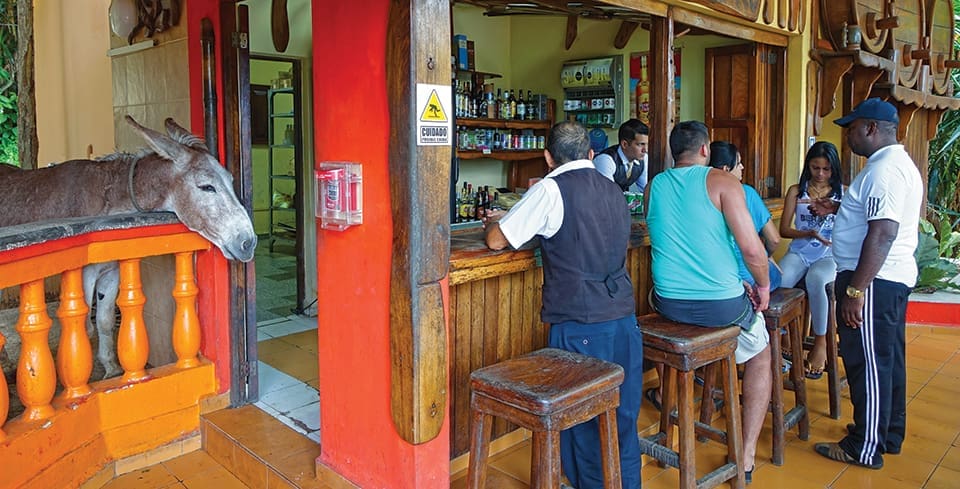
BEYOND HAVANA
Before I met Javier, the travel journalist in me longed to visit Cuba: to cruise in vintage American cars along the Malecon in Havana and sip mojitos billowing with yerba buena at the iconic Hotel Nacional. I never imagined I’d one day have family ties to the island at this pivotal time in Cuban-American history.
Since President Obama eased travel restrictions to Cuba, Havana has lost part of its mystique. Javier’s family lives in Holguin, which is Cuba’s fourth largest city but is largely off tourists’ radar. This is an added bonus for me. I’d never heard of Holguin before meeting him, and now American Airlines offers twice daily direct flights from Miami.
Working with his family, Javier planned ahead everything he wanted me to see during my 7-day journey. After a simple breakfast of strong Cuban coffee, fruit, toasted bread and hardboiled eggs, we set out to see Holguin, known as the “City of Parks,” for the five open green spaces built into its neatly gridded streets.
In the Parque Calixto García, the city’s main square, art deco buildings like the pre-Revolution Eddy Suñol Theater create a postcard scene. For tourists looking to see Cuba “before it changes,” it’s hard to imagine a better destination.
In the park itself, though, the people are all glued to their cell phones. The country’s public parks were recently set up for Wi-Fi. Additionally, hotels are places to connect. The $2 per hour online fee is steep for many Cubans, who barely make $20 per month, Janier tells me. Still, the park teems with eager internet users, many chatting with loved ones abroad—a grandmother seeing her grandbaby in Florida for the first time, a woman in skintight jeans sweetly asking her Canadian papi about her visa.
“To know everyone’s business in Holguin, just come to a park,” Janier laughs.
Nearby, we stop to see Holguin’s pretty new tourist spot, Hotel Caballeriza, an immaculate 21-room respite. Like all hotels in Cuba, it’s government-owned. This one’s part of the charming boutique-style “Encanto” chain.
Encantos run about $120 per night, which is why casas particulares—rooms for rent in Cuban homes—have gained momentum, priced at around $25 per person per night, including breakfast.
We leave the hotel and hail a pristine ’53 Chevy to bring us to the top of the Loma de la Cruz, Holguin’s mirador. Its balcony, 856 feet above sea level, can be reached by climbing 458 stairs.
The Loma de la Cruz is named for the wooden cross placed here in 1790 by a friar and is used today as a shrine. When we arrive, I follow Susana and Janier to the overlook.
“You can throw my ashes from here someday,” Susana says to Janier, taking in how the emerald hillsides cradle the city.
When Holguin’s lights twinkle and the sun sets, we head down to town.
That night we dine at 1910 Restaurante & Bar, an example of a paladar, a family-run restaurant similar to a casa particular. Reservations are normally not necessary in Holguin. Paladares offer better and more authentic fare than government-run eateries. Trip Advisor ranks the best paladares, and locals are happy to casually discuss their recommendations.
We settle in for a feast of Serrano ham, salad, grilled octopus, garlic shrimp, whole snapper and plates of congris (rice and black beans). Our bill for five people comes to around $50, including beers and piña coladas. It’s astronomical for most Cubans, who rarely dine out. I feel guilty about the meal’s affordability for me.
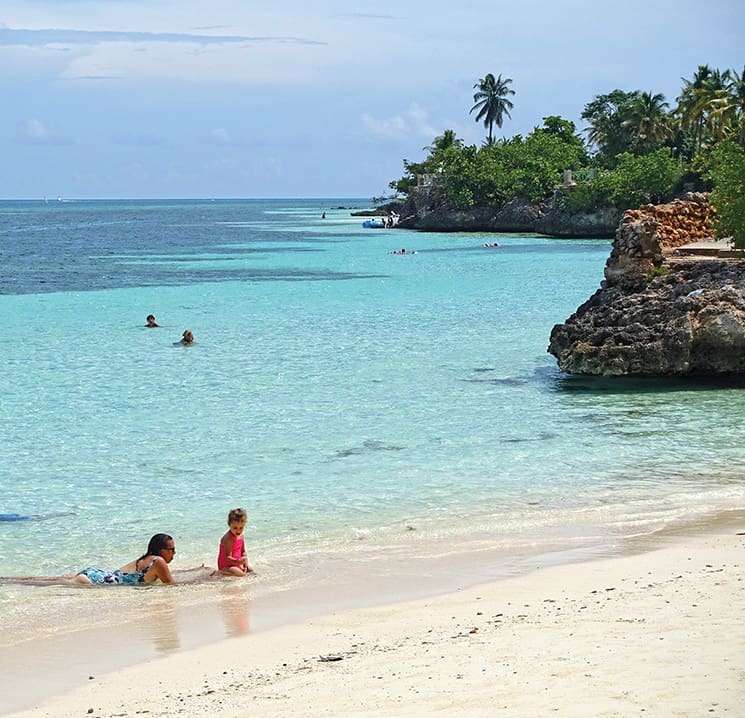
BEACH BOUND
Another day, we—Susana; Janier; my boyfriend’s 11-year-old son; his 83-year-old grandmother, La Mujer; and me—head to the beach at Guardalavaca. La Mujer immediately asks me if my breasts have milk in them yet, while giving her own chest a squeeze, ensuring nothing gets lost in translation. I tell her no and we laugh together.
We pile into a Gumby-colored ’55 Dodge and drive 33 miles northeast to Guardalavaca, where government-owned all-inclusive resorts, attracting mostly Canadians and Europeans, stretch across a beautiful white sand beach.
In a shady spot under some palms, the family unpacks a bottle of Havana Club rum to mix with Ciego Montero cola and settles in. I leave everyone to their cocktails and head into the water.
When I towel off, Susana smiles and tells me that pregnant women in Cuba avoid the ocean for fear that the movement of the waves brings on early labor. She appreciates my boldness. “Javier told me you were a loquita [crazy girl],” Susana laughs. I realize any trepidations I had about a week with strangers have disappeared.
We spend the day swimming and exploring the shoreline on pedal boats, rented for $5 an hour. La Mujer, as spry as a 40-year-old, poses for a selfie with me under a palm and says, “The secret to not feeling old is never feeling bitter. Focus on the positive things, even when life is hard.” I promise her I’ll cherish this advice.
Later, I spot a colorful sail nearby and suggest we rent a Hobie Cat for ourselves to enjoy.
“Cubans aren’t allowed on a tourist sailboat or catamaran,” Janier says with a laugh accompanied by an eye roll. “The government fears we will let the wind take us to Miami.”

OLD-WORLD CHARM
On my last day, we’ve planned a day trip to Gibara. I booked a tour through the company Ker & Downey to see how I might have experienced the region without my Cuban family’s help, though Janier and Susana decide to join me.
Our guide is Yusmara Gonzalez, a Holguin native who speaks flawless English. I’ve been speaking only Spanish up to this point, so it’s a relief to revert to my native tongue. We make the hour-long drive, going 22 miles northeast of Holguin, in a comfy air-conditioned van on roads that grow more rutted as we approach Gibara.
“Gibara needs tourists,” Gonzalez tells me. “The people are proud of their town. It’s a combination of a small city with colonial architecture, a beautiful bay and a few beaches.”
The 19th century brought Gibara’s golden age of trade and commerce, but in the 20th century, things unraveled when the bay was deemed too shallow for big ships.
“After the glamour years, it was a ghost town,” Gonzalez says.
Today, Gibara seems ripe for a comeback. Colonial-era buildings line the street overlooking the water, along with casas particulares and a few beautiful government-owned hotels, including the recently revamped Hotel Ordoño; parks lined with tropical trees; a cathedral; a few bars and an art gallery.
In April, the annual Festival Internacional de Cine Pobre spotlights independent filmmakers from Cuba and from as far away as Burkina Faso and Lebanon, screening works for an increasingly international crowd. It’s one of Latin America’s best-kept secrets.
For lunch, we find La Cueva Taina Restaurante, a family-run restaurant in a farm-like setting on the outskirts of town. For around $10 a head, a lavish seafood spread materializes at long wooden tables set in palm thatch huts. There are stuffed crabs, land crabs (which biannually migrate between Cuba’s coasts), whole snapper, grilled shrimp, tuna, tostones and boniato (sweet potatoes). The lunch is included in our tour, and I make a quick call to assure my boyfriend that his mother is enjoying “all the shrimp she wants,” as he’d requested of me before I left.
Then we set out together for our final adventure into the Cueva de los Panaderos—a cave named by a group of friends who worked together at a local bakery in the early 20th century and liked to escape here in their downtime.
Bats patrol the gaping entrance and hermit crabs stalk the sand as we enter the cave, one of 28 in the area, following our guide Leonel Tauler with headlamps lighting the way. Stunning crystal formations and stalactites appear at every turn. The cave winds more than 1.5 miles back, Tauler says, finishing at an underground lake filled with shrimp and fish.
“We have so much to show visitors,” Tauler says. “We are just waiting for them to come.”
Before we exit, he asks us to turn off our headlamps, linger in the complete darkness, and make a wish.
I think about something Janier said to me earlier in the day. He said my visit had made it easier for everyone to stay strong until they see Javier again.
I have an inkling what Janier and Susana are wishing for in that cave. I’m grateful for how well things have gone, meeting my Cuban family. Then I make my wish that when I return to Cuba, it will be with my two boys—Javier, and our half-Cuban, half-American son.
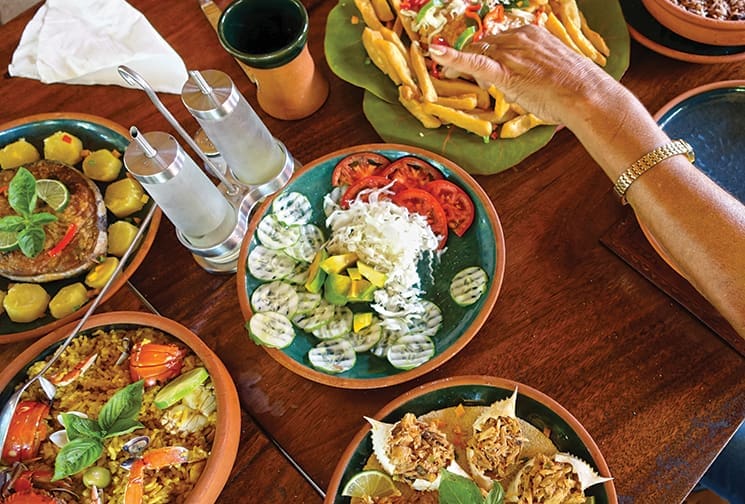
VAMOS A IR A CUBA
Details to get you to the Island
Travel to Cuba is restricted, except for Americans who meet one of 12 conditions for authorized trips including humanitarian projects, family visits, journalistic purposes and academic programs.
In August, JetBlue became the first U.S. carrier since the ’60s to offer commercial service to and from Cuba with flights from Ft. Lauderdale and more distant airports. American Airlines flies twice-daily from Miami to Holguin. Many other airlines—Frontier Airlines, Southwest Airlines, Alaska, United, Spirit, Delta and Silver Airways—are expected to start service too.
Cuba’s national carrier, Cubana, offers several daily flights from Havana to Holguin, with a flight time of about 80 minutes (cubana.cu). CubaJet also flies weekly between the two cities (cubajet.com).
Americans must acquire a visa or tourist card and Cuban health insurance to enter the country. JetBlue and American Airlines provide visas at check-in. Tour operators such as Ker & Downey also provide visas (kerdowney.com). Some airlines operating from the U.S. include health insurance in ticket prices.
TRAVEL GEMS
What you need to know before visiting Cuba, the Pearl of the Antilles
Currency:
ATMs are rare and don’t accept U.S. bank cards. Cuban businesses reject U.S. credit cards. So cash is king; bring enough U.S. dollars for your trip. Cuba has two currencies: the National Peso (CUP) for Cubans, and the Convertible Peso (CUC) for tourists. The exchange rate for CUC and USD is 1:1. If you have to convert cash to CUCs in Cuba, use an official bank, not a street-side converter.
Health:
The CDC advises updating your vaccinations. Take sensible precautions against Zika and drink bottled water.
Planning Online:
Most of Cuba’s larger, government-owned tourist hotels, such as the Cubanacan chain, can be booked online (hotelescubanacan.com). Research casas particulares at casaparticular.com. Airbnb constantly updates lodging listings, and Trip Advisor is an increasingly good source for hotel and restaurant recommendations. Restaurant reservations are typically not necessary.
Customs:
In October, the U.S. government lifted limits on the amount of Cuban cigars and Havana Club rum Americans can bring back with them. Get the biggest carry-on you can possibly manage!

